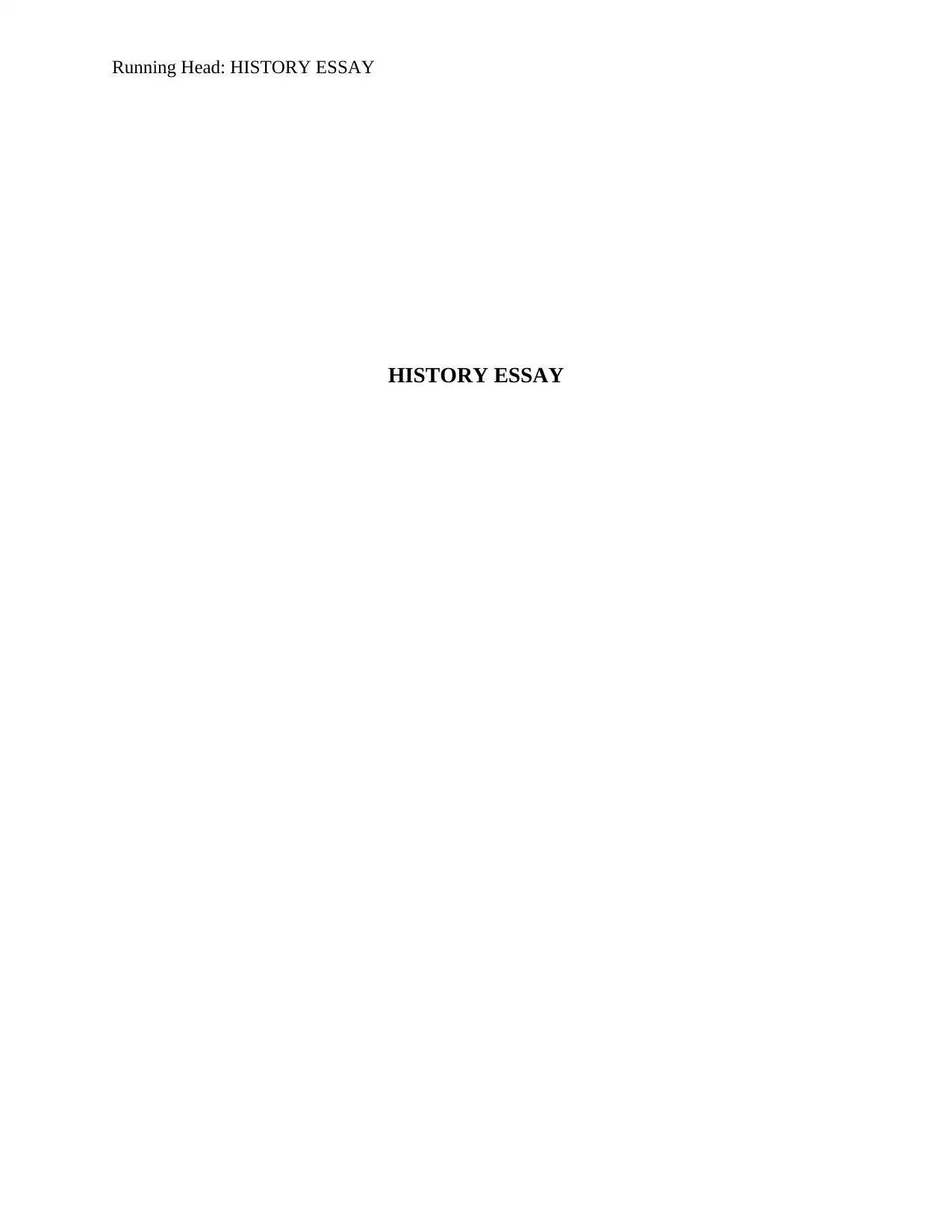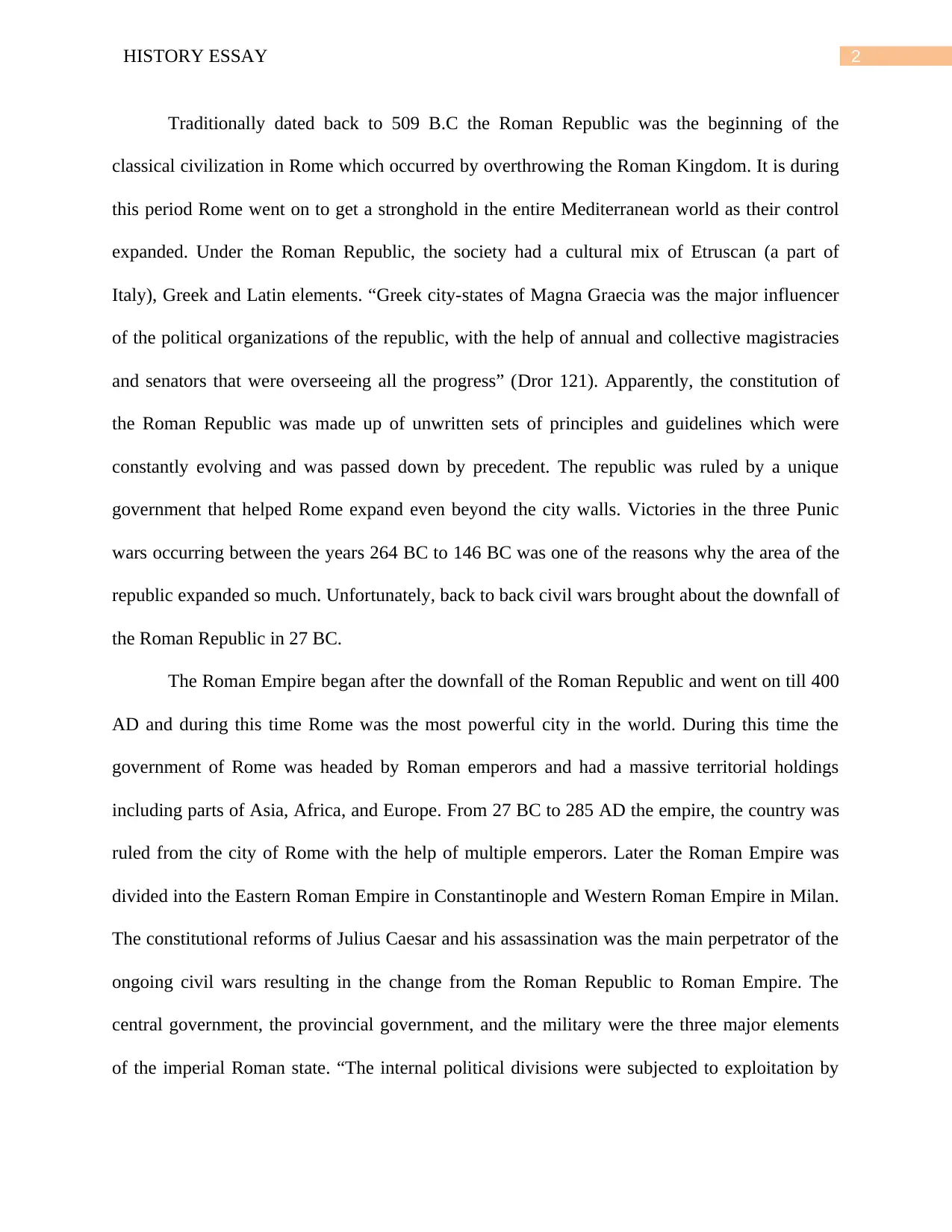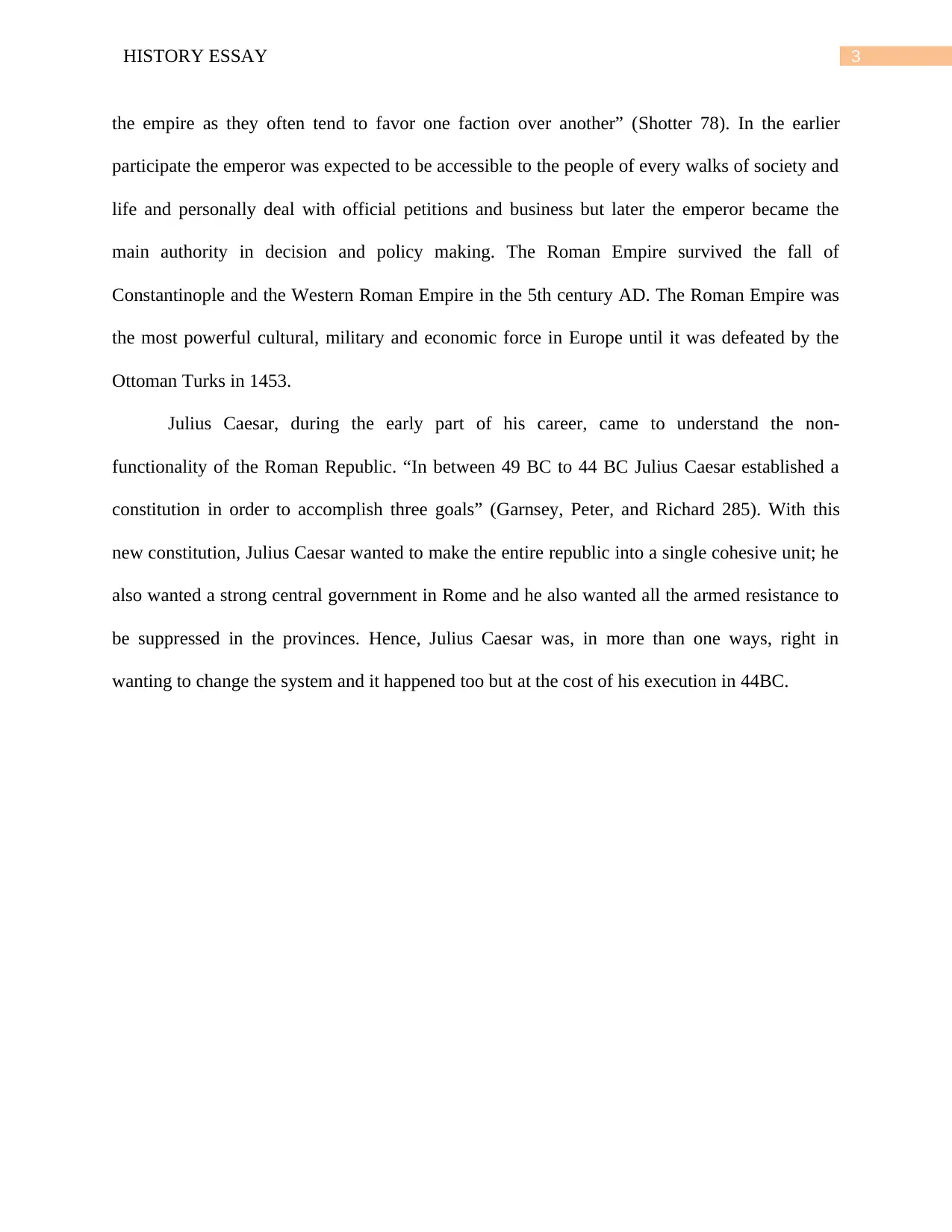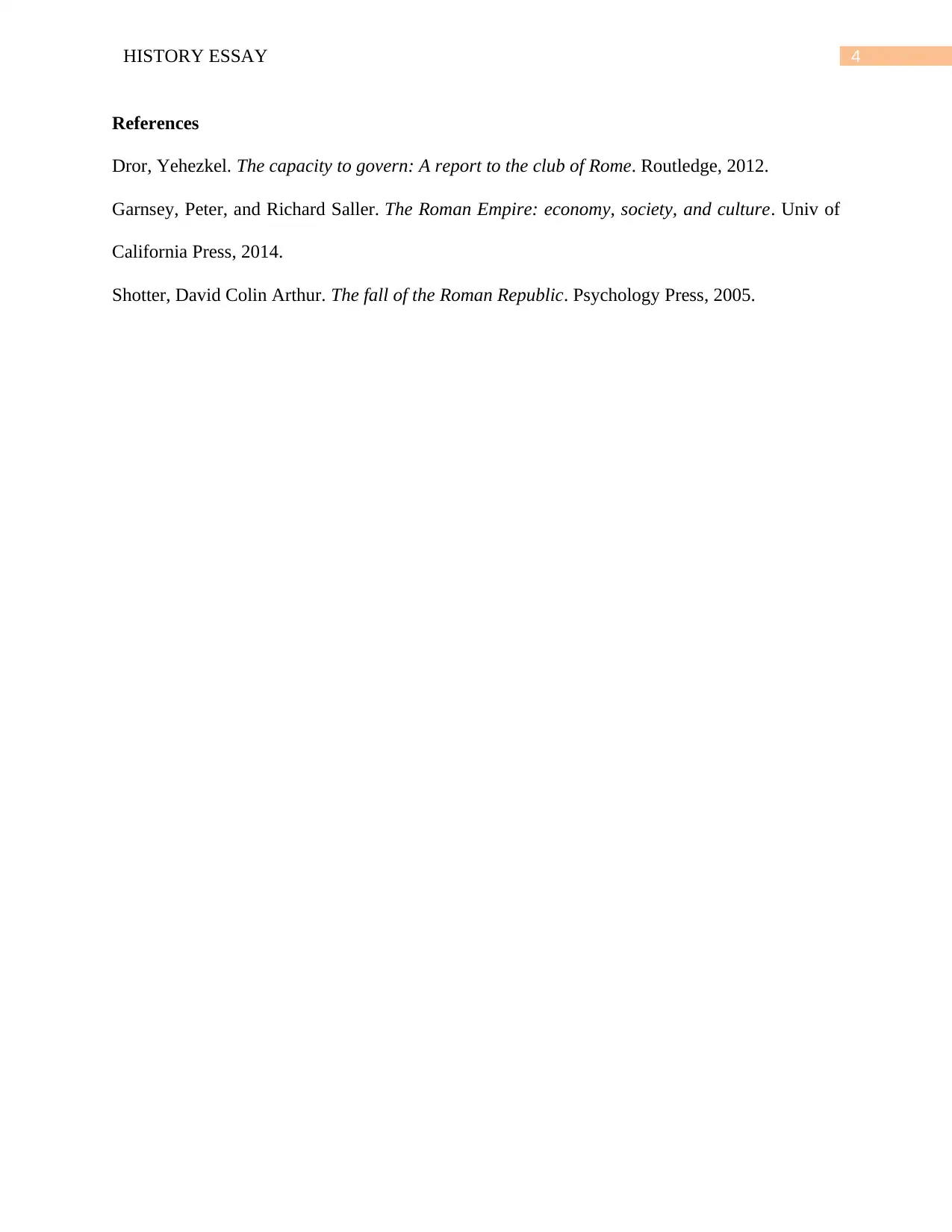History Essay: Exploring the Roman Republic and Roman Empire's Legacy
VerifiedAdded on 2023/01/13
|4
|690
|91
Essay
AI Summary
This essay examines the historical transition from the Roman Republic to the Roman Empire, highlighting key events, figures, and societal changes. It begins by outlining the establishment of the Roman Republic in 509 B.C., its cultural influences, and the role of the Greek city-states. The essay then discusses the expansion of the Republic through the Punic Wars and the subsequent internal conflicts that led to its downfall. The rise of the Roman Empire is explored, including the role of Julius Caesar and the evolution of the government under emperors. The essay also touches upon the division of the Empire, its eventual decline, and the lasting impacts on Europe and the world. Key figures like Julius Caesar and important constitutional reforms are discussed to provide a comprehensive understanding of this transformative period in history, drawing on references to support arguments.
1 out of 4










![[object Object]](/_next/static/media/star-bottom.7253800d.svg)